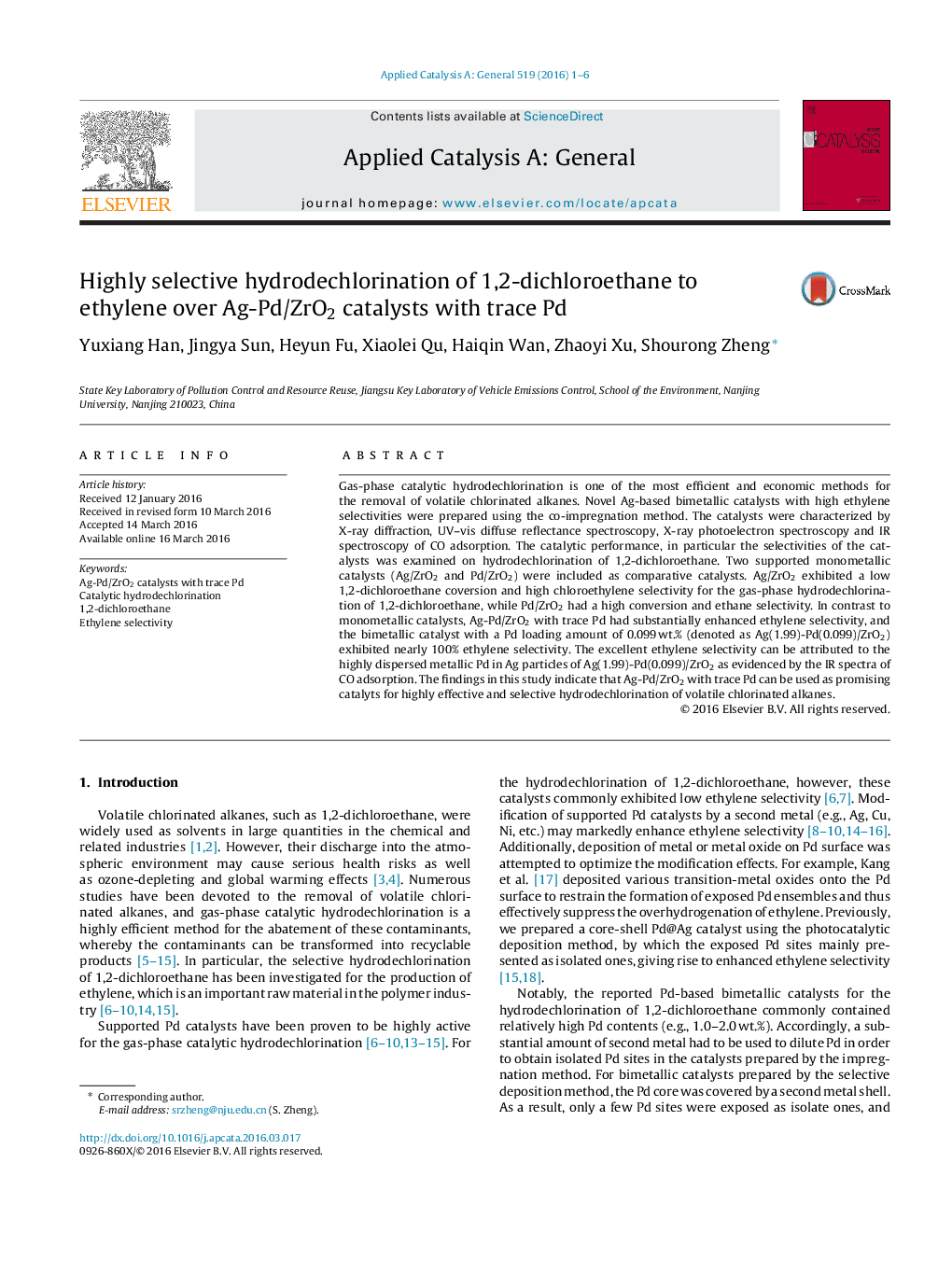| Article ID | Journal | Published Year | Pages | File Type |
|---|---|---|---|---|
| 38892 | Applied Catalysis A: General | 2016 | 6 Pages |
•Ag-Pd/ZrO2 with trace Pd was prepared using the co-impregnation method.•Isolated Pd sites dominated in the Ag-Pd/ZrO2 catalysts.•Ag-Pd/ZrO2 with trace Pd exhibited high ethylene selectivities.
Gas-phase catalytic hydrodechlorination is one of the most efficient and economic methods for the removal of volatile chlorinated alkanes. Novel Ag-based bimetallic catalysts with high ethylene selectivities were prepared using the co-impregnation method. The catalysts were characterized by X-ray diffraction, UV–vis diffuse reflectance spectroscopy, X-ray photoelectron spectroscopy and IR spectroscopy of CO adsorption. The catalytic performance, in particular the selectivities of the catalysts was examined on hydrodechlorination of 1,2-dichloroethane. Two supported monometallic catalysts (Ag/ZrO2 and Pd/ZrO2) were included as comparative catalysts. Ag/ZrO2 exhibited a low 1,2-dichloroethane coversion and high chloroethylene selectivity for the gas-phase hydrodechlorination of 1,2-dichloroethane, while Pd/ZrO2 had a high conversion and ethane selectivity. In contrast to monometallic catalysts, Ag-Pd/ZrO2 with trace Pd had substantially enhanced ethylene selectivity, and the bimetallic catalyst with a Pd loading amount of 0.099 wt.% (denoted as Ag(1.99)-Pd(0.099)/ZrO2) exhibited nearly 100% ethylene selectivity. The excellent ethylene selectivity can be attributed to the highly dispersed metallic Pd in Ag particles of Ag(1.99)-Pd(0.099)/ZrO2 as evidenced by the IR spectra of CO adsorption. The findings in this study indicate that Ag-Pd/ZrO2 with trace Pd can be used as promising catalyts for highly effective and selective hydrodechlorination of volatile chlorinated alkanes.
Graphical abstractFigure optionsDownload full-size imageDownload high-quality image (174 K)Download as PowerPoint slide
